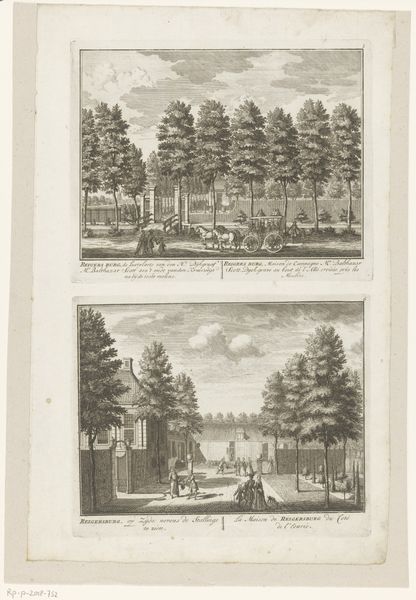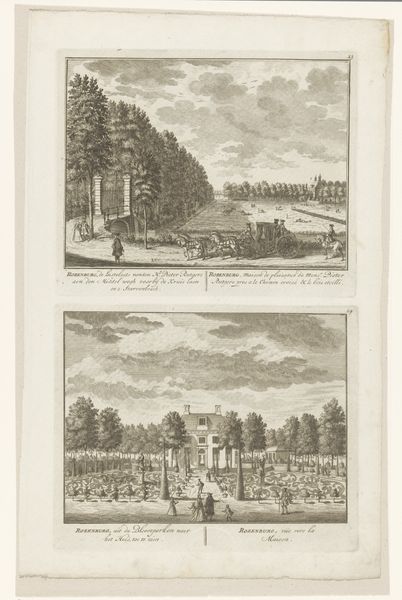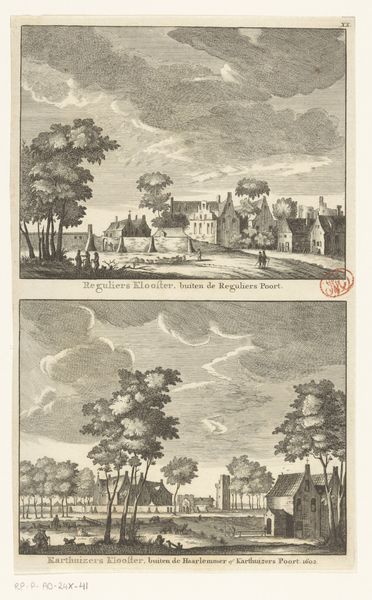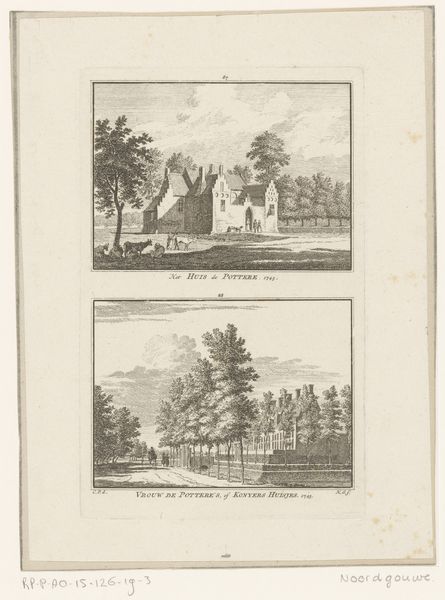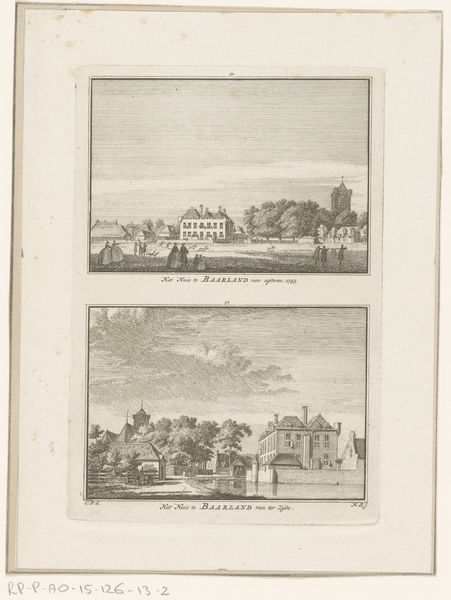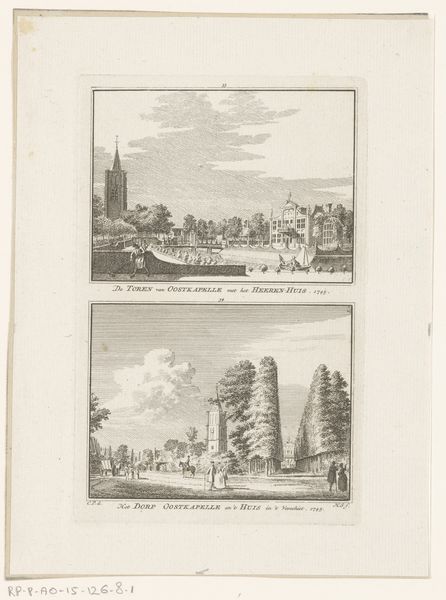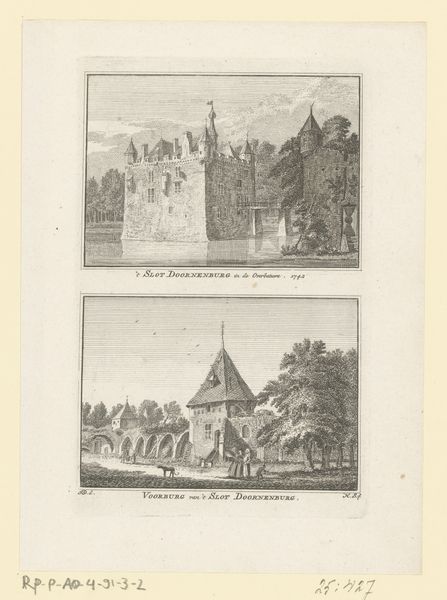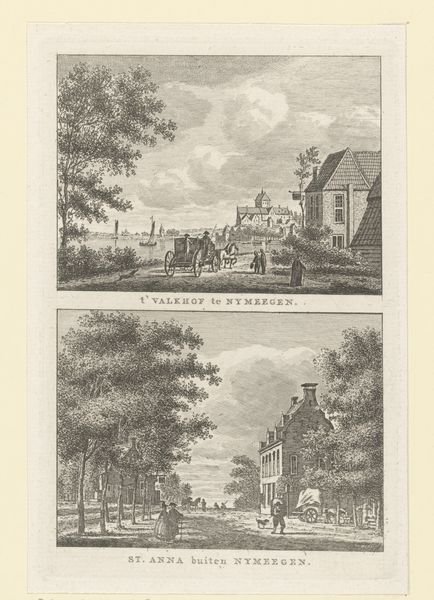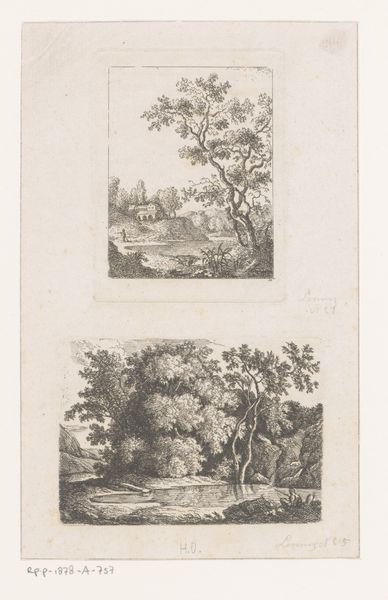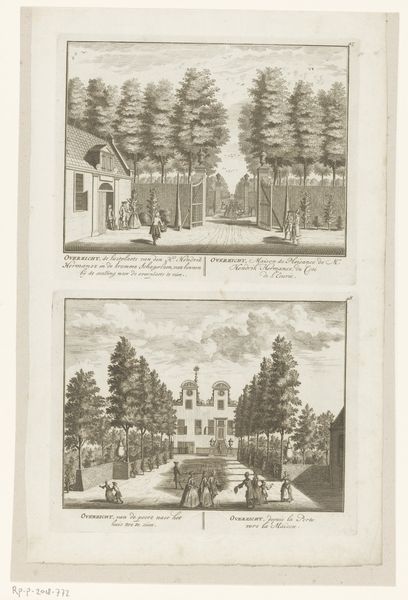
Gezichten op het Kleine- en Grote Karthuizershof omstreeks 1630 c. 1760 - 1767
0:00
0:00
anonymous
Rijksmuseum
print, etching, engraving
#
dutch-golden-age
# print
#
etching
#
old engraving style
#
landscape
#
cityscape
#
engraving
Dimensions: height 267 mm, width 170 mm
Copyright: Rijks Museum: Open Domain
Curator: Before us is an engraving offering two "Views of the Kleine and Grote Karthuizershof around 1630." While attributed to an anonymous artist, this print, circa 1760-1767, provides a fascinating window into the historical context of these Carthusian monastery complexes. What's your initial impression? Editor: My eye is drawn to the intricate detail rendered with the etching and engraving techniques, which evoke an immediate sense of serenity. The materials—the paper itself—speak of durability, ensuring that images of this landscape can persist. I'm curious how accessible prints such as this one might have been at that time and to whom? Curator: That’s a salient point. These images served a purpose beyond mere aesthetic appeal. We have two contrasting social spaces: "little" and "large," denoting potential hierarchies, wealth disparities, and land ownership implications during the Dutch Golden Age, reflected in its urbanization processes. Editor: The landscapes differ as much as the names suggest. I observe subtle indications of labor present in both, such as in the clothes hanging between the buildings, yet, these details serve mainly to emphasize the domesticity and labor implicit in these spaces, but they aren't its focus. Curator: True. Considering this monastery existed during a period of significant social upheaval and religious reformation, I consider that the imagery and production, specifically the distribution of the print, would undoubtedly act to perpetuate specific worldviews that reinforced notions of spiritual retreat. Editor: Yes, and understanding printmaking requires consideration of craft. I want to understand the methods used in the making. Knowing whether it's etched on copper, for instance, speaks volumes about the degree of craft and time and would potentially allow a greater run. Curator: Agreed. What remains striking is the enduring appeal. This wasn't merely a neutral record of a cityscape, rather a testament to how these sites functioned—then and potentially now—in the collective imagination of the community. Editor: It’s interesting that after looking closer at these almost quotidian elements and their manufacture we see that they represent broader trends in urban history—perhaps things that would otherwise not catch our eye or become immediately apparent. I'm ready to look at some brick production!
Comments
No comments
Be the first to comment and join the conversation on the ultimate creative platform.
